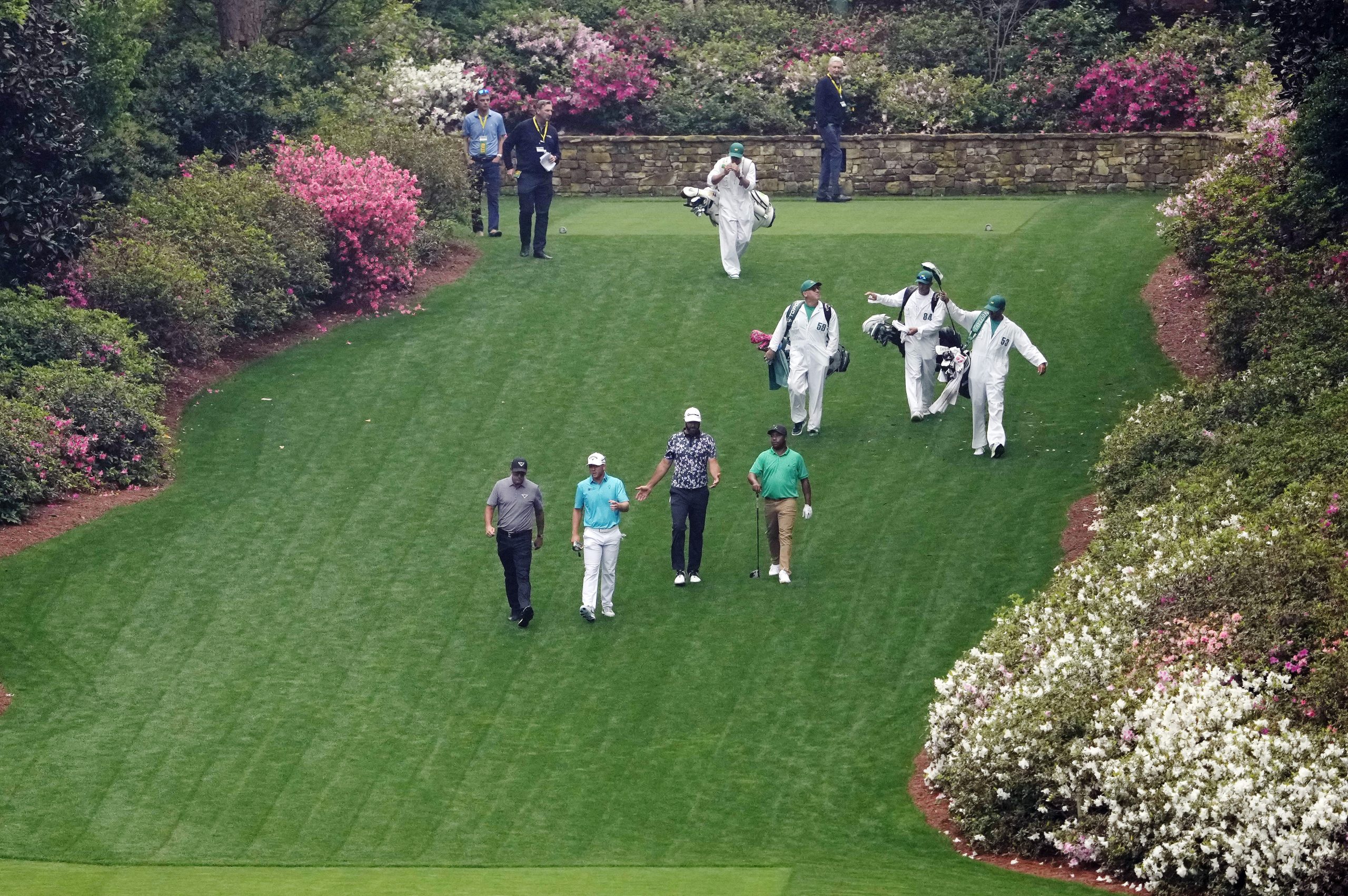AUGUSTA, Ga. – It’s been 21 years since Augusta National Golf Club first added extra length to Azalea, the par-5 13th hole at the end of Amen Corner.
The green jackets first moved the tee back 20-25 yards in 2002, then eight years later added another seven yards to the front of the tee box. Ahead of this year’s tournament, the 13th tee was moved back 35 yards.
“We believe this modification will put a driver in play more often and restore the element of risk and reward that was intended in the original design of the hole,” said chairman Fred Ridley during his annual address on Wednesday.
“And I certainly look forward on Sunday to having someone in competition with a 3- or 4-iron in their hand or even a hybrid hitting their shot into the 13th hole rather than an 8-iron,” he added. “I think on balance it’s going to prove to be the right decision.”
That begs the question: did Augusta’s plan work?
Sure, it’s a small sample size to use just one tournament’s worth of data, especially when two of the four rounds were greatly impacted with inclement weather and numerous delays, but let’s not let a little rain and wind get in the way of a fun thought exercise. After all, we have to start somewhere.
Here’s a look at how competitors played the 13th hole in Sunday’s final round of the 2023 Masters.
Apr 2, 2018; Augusta, GA, USA; Beauty shot of the 13th green during a practice round for the Masters golf tournament at Augusta National GC. Mandatory Credit: Michael Madrid-USA TODAY Sports
Lay up or go for it?
Augusta National’s depth of stats for the Masters is truly impressive, but there isn’t an annual stat breakdown for “Go or No” on No. 13. The closest thing we have to compare is from the folks at the Fried Egg, who took a look at how players approached the 13th on Thursday.
Of the 86 players in the field, 31 laid up (36 percent) in the opening round, 16 from the fairway (19 percent).
63% of the field went for the green in two, and 36% of second shots held the green. Three players attempted to reach the green from the pine straw right of the fairway. Eight approaches landed in the tributary of Rae’s Creek. — The Fried Egg
In the final round, four of the 53 players who made the cut went OB off the 13th tee. Of the 49 who were in play, 24 laid up (49 percent), 20 went for the green in two and didn’t hit it (41 percent), and only five went for it and held it (10 percent).
It’s interesting to see a more even strategy during the final round compared to the first, but not shocking given Sunday’s amplified pressure, as well as windy and cold conditions. What was surprising was how even the split was for those who started off the first and 10th tees. Those at the bottom of the leaderboard (with seemingly less to play for) started on the second nine, with 11 opting to lay up and 11 choosing to test their luck. Among those who had a bit more to play for that started off No. 1, 14 went for the green in two and 13 laid up.
From those who laid up – 22 of the 24 did so from the fairway – seven made birdie and 16 made par. Mito Pereira was the lone eagle after holing out from the fairway.
Of the 20 players who went for the green in two and didn’t hold it, nine found the water (five bogeys, four pars). Scottie Scheffler (par) and Sepp Straka (birdie) were the only two who went for the green from off the fairway. In total, six who went for it made birdie, nine made par and five made bogey.
Here’s how the five who went for and held the 13th green fared:
Tommy Fleetwood: Birdie
Chris Kirk: Birdie
Phil Mickelson: Birdie
Justin Rose: Birdie
Cameron Young: Eagle
Over the last 22 years at the Masters, the 13th hole at Augusta National has been one of the three easiest holes 20 times. In the other two years (2008 and 2013) it was the fourth easiest hole. This year, the 13th played as the fourth easiest hole, and despite the weather and added yardage, the numbers were pretty similar.
Scores at No. 13 since 2002
Year
Rank
Eagles
Birdies
Pars
Bogeys
Double bogeys
Other
2002
16
4
83
133
35
7
3
2003
16
3
83
145
45
5
3
2004
16
7
89
135
31
12
0
2005
17
7
88
150
29
6
2
2006
17
14
96
120
33
9
2
2007
16
9
89
167
38
6
3
2008
15
8
87
137
33
11
1
2009
17
14
124
128
19
6
1
2010
16
10
107
129
33
7
1
2011
18
13
137
115
24
6
1
2012
16
10
128
127
39
9
1
2013
15
2
127
132
42
3
2
2014
18
8
122
123
39
3
1
2015
18
20
141
111
22
9
1
2016
17
7
119
122
37
5
2
2017
18
6
128
131
22
5
0
2018
18
9
128
112
24
7
0
2019
18
17
158
102
23
3
1
2020
16
8
139
120
34
2
0
2021
17
9
132
112
23
6
2
2022
16
6
91
139
37
6
4
2023
15
8
108
122
30
7
2
No. 13 played as the toughest of the four par 5s, and players averaged 4.74 for the week – down from 4.85 last year – but scored 4.85 on average in the final round, the highest of the par 5s on Sunday.
Players made more birdies and eagles compared to last year, and slightly fewer pars and bogeys. Double bogeys and others were about the same.
This is just one round of the first Masters with the added length to the 13th tee, and players are sure to figure out the best way to play the hole the more cracks they get. While more time will be needed for an accurate ruling on the changes, the risk/reward was back in the first year.








